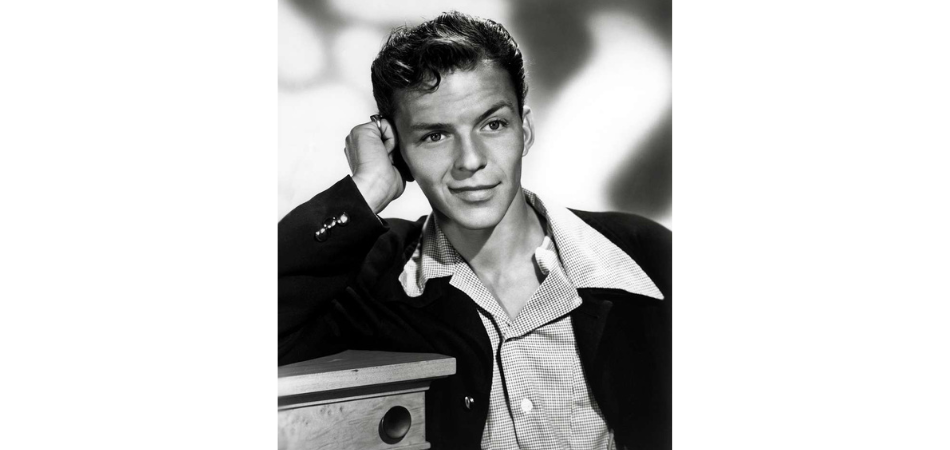Frank Sinatra, the “Chairman of the Board,” was an emblem of American culture, a symbol of the golden age of jazz and swing and the personification of the high life. With his smooth voice and charismatic stage presence, he captivated audiences worldwide, becoming one of the most influential musical icons of the 20th century. Yet, behind the glittering façade of sold-out shows and silver screen appearances, Sinatra grappled with personal demons, including a tumultuous relationship with alcohol and prescription drugs. This blog will cast a light on the darker side of Sinatra’s legacy, revealing a man who faced the all-too-human struggle of addiction and how it shaped his life and career in ways that the spotlight rarely revealed.
Humble beginnings: Taverns and mobsters
Before Frank Sinatra became a household name, he was Francis Albert Sinatra, born to Italian immigrants in the blue-collar town of Hoboken, New Jersey. His father, Martin, was a boxer-turned-firefighter, and his mother, Dolly, was a political force in their neighbourhood, known for her entrepreneurial spirit and dynamic personality.
The young Sinatra was raised in a culture where alcohol was deeply ingrained. It was not uncommon for families like his to produce homemade wine, particularly during Prohibition, a tradition brought over from the old country. Sinatra’s parents, particularly his mother, were influential figures in their community and their tavern, Marty O’Brien’s Bar and Grill, became a local hub where mobsters like Lucky Luciano were regular customers.
The jovial drinking environment left an indelible imprint on Sinatra, but it also exposed him to the darker side of drinking. The Great Depression led many to seek solace in the bottle, and Sinatra witnessed the brawls and the volatility that could spill out of a night of heavy drinking. These formative experiences created a complex backdrop for Sinatra’s later life, where the spectre of alcohol abuse would often shadow the glamour of the nightlife.
Sinatra’s rise to fame: Big bands and booze
Frank Sinatra’s leap from the streets of Hoboken to the star-studded avenues of Hollywood in the 1940s is a narrative of remarkable talent meeting opportunity. Starting as a crooner for the Harry James and Tommy Dorsey orchestras, he soon became the heartthrob of the bobbysoxers, serenading the nation with his velvet voice. By the mid-1940s, Sinatra had established himself as a top solo artist, his fame bolstered by hits like “I’ll Never Smile Again” and “New York, New York.”
Sinatra’s early alcohol use was marked by the celebratory air of his newfound success. The entertainment industry at the time was steeped in a culture where alcohol was a mainstay. It was the era of the ‘Rat Pack’, where Sinatra and his fellow icons were often seen with a drink in hand, epitomising the carefree spirit of the swing era. The bottle became a constant companion for Sinatra, known for his love of Jack Daniels. As Sinatra’s biographer, Robbyn Swan, explained:
“From the mid-40s on, he was really seriously abusing the booze, and, even in his later life, drinking a bottle of Jack Daniels a day.”
Despite the glossy veneer of the industry, the culture of alcohol often masked a deeper unease, and for Sinatra, the bouts of drinking began to take their toll. Instances of late-night brawls and cancelled shows started to mar his professional image. Yet, in these early stages of his career, Sinatra’s relationship with alcohol seemed to fuel his legend as much as it forewarned of the struggles to come.
The Height of Success: Pills and prizes
The 1950s and 60s marked the zenith of Frank Sinatra’s career, expanding his influence beyond the music scene to film and television. His Academy Award for “From Here to Eternity” cemented his status as a singer and a serious actor. This period of triumph, however, coincided with a burgeoning intimacy with prescription drugs – a facet of his life that, while less publicised, became increasingly significant behind closed doors.
As the pressures and pace of stardom intensified, Sinatra, like many of his contemporaries, began to rely on prescription drugs to manage the demands of his exhaustive schedule. Sleeping pills and sedatives helped him rest in an industry where the nights were long and the mornings came early, while amphetamines helped maintain the relentless energy required for performances and appearances.
The dark side of this chemical coping mechanism also became apparent as stories leaked about Sinatra’s mood swings, periods of reclusiveness and volatile behaviour. Sinatra himself spoke of his mental issues, which were still widely misunderstood at the time:
“Being an 18-karat manic-depressive, and having lived a life of violent emotional contradictions, I have an over-acute capacity for sadness as well as elation.”
Sinatra’s prescription drug use reflected a broader trend in American society, where the stigma was minimal, and their use was often casually overlooked or even encouraged. The culture within the entertainment industry, particularly, was permissive, viewing these drugs as necessities for maintaining the facade of ceaseless vitality and resilience.
The toll of stardom: Ava and addiction
Behind the glamour, the effects of Sinatra’s substance use began to take its toll, the impacts reverberating through his professional life and intimate relationships. His prescription drug addiction and alcohol addiction became an open secret, punctuated by notable incidents that underscored the severity of his struggles.
Sinatra’s marriage to Ava Gardner in the 1950s was tumultuous, marked by passionate love and destructive arguments, with Sinatra’s drinking often at the core. The public spats and private despair were signs of a man wrestling with his demons, and his daughter Nancy spoke of the “Jekyll and Hyde” nature of her father’s drinking.
Professionally, there were cancelled concerts and studio sessions where Sinatra’s condition was so affected by alcohol and drugs that they had to be rescheduled or scrapped entirely. One such incident occurred while recording the “Strangers in the Night” album, where Sinatra’s inebriation was apparent, leading to a tense confrontation with producer Jimmy Bowen. His work on film sets was similarly affected. Sinatra’s role in “The Man with the Golden Arm,” where he portrayed a drummer struggling with drug addiction, was seen by some as life-imitating art.
Throughout the 1960s, as his professional commitments mounted alongside his fame, Sinatra’s reliance on substances escalated. There were moments of clarity and attempts at sobriety, often motivated by his relationships or the stark realisation of his declining health. Yet, the pattern of addiction proved difficult to break, and despite brief periods of wellness, Sinatra repeatedly relapsed.
Sinatra’s legacy: Triumphs and troubles
Frank Sinatra’s legacy is one of stark contrasts, a life rich in artistic triumphs cast against the shadows of his troubles. While he was often able to channel the raw emotions of his experiences into his art, those close to him witnessed the toll it took and often bore the brunt. This is common for the loved ones of “functioning” alcoholics and drug users, with the outside world never getting to peek behind the veil.
Sinatra’s story is a poignant narrative of Hollywood’s quintessential star. He was a man who achieved unparalleled heights in an unforgiving industry while wrestling with the vices that so often accompany fame. It is a history that repeats itself time and time again, with countless celebrities teetering on a tightrope between public adoration and personal pain.
Final thoughts
Sinatra’s journey through the dazzling yet perilous landscape of fame offers invaluable lessons for contemporary society’s approach to addiction. Unlike in Sinatra’s era, there is a far greater understanding of the mechanisms of addiction today. Many celebrities have opened up about their struggles, which has fostered a more compassionate public discourse around addiction. This transparency has not only helped to destigmatise addiction but has also paved the way for more supportive measures and open conversations about mental health and substance abuse in the limelight. These lessons extend beyond the rich and famous to anyone affected by addiction. Only by looking deeper and identifying the signs hidden behind a “functioning” façade can we help those who need it.
If you or someone you love is navigating the challenging path of addiction, UKAT is here to guide and support you. Reach out to us today and take the first step towards a life of recovery and wellness, where your story of triumph is waiting to be written.
(Click here to see works cited)
- Asian News International. “Sinatra was a ‘functioning alcoholic’ | Latest News India.” Hindustan Times, 1 August 2006, https://www.hindustantimes.com/india/sinatra-was-a-functioning-alcoholic/story-CE93jxRZJWqVVEO76YvRFO.html. Accessed 10 November 2023.
- Barker, Karlyn. “Masterful Singer, Chorus of Praise.” The Washington Post, 1998, https://www.washingtonpost.com/wp-srv/style/longterm/sinatra/obit.htm. Accessed 10 November 2023.
- Shakhnazarova, Nika. “Frank Sinatra and Ava Gardner’s toxic marriage and affairs that tore them apart.” The Mirror, 5 July 2020, https://www.mirror.co.uk/3am/celebrity-news/inside-frank-sinatra-ava-gardners-22290210. Accessed 10 November 2023.









